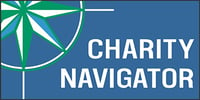I was recently part of a skills gap discussion, based on an April 2014 article from Inc., entitled “Is There Really A Skills Gap?” by Cait Murphy. While there are many opinions if a skills gap, a motivation gap, or whatever gap you want to call it exists. The fact remains there are plenty of people looking for a job (or a different job), and many employers who need people and can’t find them.
April 2014 article from Inc., entitled “Is There Really A Skills Gap?” by Cait Murphy. While there are many opinions if a skills gap, a motivation gap, or whatever gap you want to call it exists. The fact remains there are plenty of people looking for a job (or a different job), and many employers who need people and can’t find them.
As highlighted in the article, businesses can, and should control their own destiny in attracting, training, and retaining talent to support their growth needs. The time to act is now. Many resources exist to help you, including Goodwill.
There are a few things to consider as part of your talent attraction and retention strategy. The first question is do you have a strategy? If the answer is no, create one. A simple talent diagnostic can uncover your gaps and create an action plan for improvement. A few questions to consider:
Attracting Talent
- Do you have a broad enough net for talent? Do you merely post openings on job boards and wait for candidates to come in? Chances are you’re missing out on top candidates who may be passive (currently employed), or connected through other recruiting channels (like Goodwill TalentBridge, Workforce Connection Centers and more).
- Have you profiled your best employee’s characteristics or behaviors, and incorporated these into your recruiting process (and your training and performance management processes too)? Understanding the DNA of your high performers guides you on what traits to look for (or to screen out). Your interview questions should focus less on technical competency or experience and more toward those characteristics or behaviors that thrive in your organization (self-starter, problem solver, flexible, etc). Technical skills (to some degree) can be taught.
- Is your recruiting process easy to navigate, or do you leave your candidates frustrated by the number of hoops to go through (i.e. applications, assessments, and lack of follow-up). This does not bode well for positive feelings about your organization, either as a potential employee or a customer.
- Do you have certain criteria that screen out good candidates, based on some policy or rule put in twenty years ago? Do you require minimum years of experience in your industry? Try looking at other industries for transferrable skills (the hospitality or retail industry for strong customer service skills as an example).
Training Talent

- Do you invest in apprenticeship or training programs? The article points out a study of apprenticeship programs have shown an ROI of $1.47 for every dollar invested. Goodwill has built several innovative training solutions and is helping businesses with their bottom line.
- If you are using contingent staffing, how much training are the individuals receiving? Temporary staff has a direct link to your quality, productivity, safety, and customer experience outcomes. These individuals also can, if set up correctly, become a pipeline for your permanent position. Isn’t it worth some investment of meaningful training?
- How much do you train your team (supervisors and staff alike) on soft skills, such as communications, professionalism, or problem solving? Is emotional intelligence ever covered? These are the basics that drive positive behavior and better business results.
- Do your supervisors provide a safe, coaching environment to help individuals grow? Would supervisors rather spend two minutes telling staff to work faster or stop making errors, versus spending five minutes showing them the right techniques that drive longer term productivity and job satisfaction?
Retaining Talent
- You likely measure turnover, but do you measure when the turnover event occurred or why (voluntary or involuntary)? As a general rule of thumb, if turnover happens in the first 6 months, it’s likely a recruiting issue. If turnover happens between 6 months and 3 years, it’s likely a leadership / culture issue. If turnover happens greater than 3 years, it’s likely a lack of career path or advancement issue.
- Have you taken a look at the long term training and professional development path (from entry to leadership) recently? What does the onboarding process look like? Do new hires know how their work fits in and what their expectations are? Do you offer job rotations, stretch project assignments, mentoring, or other external learning opportunities?
These are just a few questions to ask to diagnose and proactively resolve your skills gap (pay and transportation are two other topics for another time). Goodwill’s long Workforce Development history and service blend has led us to uncover many best practices, each that can be uniquely customized for your environment. We would be happy to conduct a talent diagnostic with you. If you are interested in learning more, please contact me at ddepies@goodwillsew.com.











